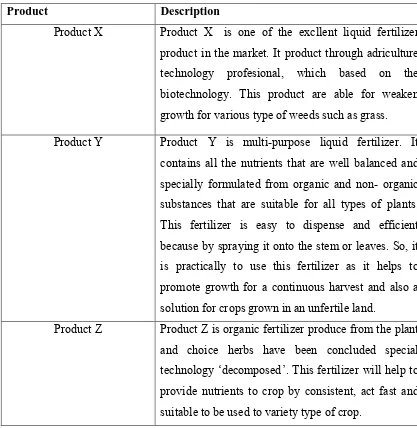UNIVERSITI TEKNIKAL MALAYSIA MELAKA
PRODUCTION OPERATING SYSTEMS: A CASE
STUDY OF STOCK AND
MAKE-TO-ORDER SYSTEM
2012
NUR NADIA RAMADHANI BINTI MD YUSOFF
UNIVERSITI TEKNIKAL MALAYSIA MELAKA
This report submitted in accordance with requirement of the Universiti Teknikal Malaysia Melaka (UTeM) for the Bachelor Degree of Manufacturing Engineering
(Manufacturing Management) (Hons.)
by
NUR NADIA RAMADHANI BINTI MD YUSOFF B050810139
890617-03-5308
FACULTY OF MANUFACTURING ENGINEERING 2012
UNIVERSITI TEKNIKAL MALAYSIA MELAKA
Teknikal Mal aysia Mel aka (UTeM) dengan syarat -syarat kegunaan sepert i berikut : 1. Laporan PSM adal ah hak mil ik Universit i Teknikal Mal aysia Mel aka dan penul is. 2. Perpust akaan Universit i Teknikal Mal aysia Mel aka dibenarkan membuat sal inanunt uk t uj uan pengaj ian sahaj a dengan izin penul is.
DECLARATION
I hereby, declared this report entitled “Production Operating Systems: A Case Study of Make-to-Stock and Make-to-Order System” is the results of my own
research except as cited in references.
Signature : ……….
Author’s Name : Nur Nadia Ramadhani Binti Md Yusoff
APPROVAL
This report is submitted to the Faculty of Manufacturing Engineering of UTeM as a partial fulfillment of the requirements for the degree of Bachelor of Manufacturing Engineering (Manufacturing Management) (Hons.). The member of the supervisory is as follow:
i
ABSTRAK
iii
DEDICATION
iv
ACKNOWLEDGEMENT
viii Appendix E Production Stability Index
xi
Content Page No
4.4 Defects for Product L 58
4.5 The portion of customers for Product M 59
4.6 Defects for Product M 59
4.7 The portion of customers for Product N 60
4.8 Defects for Product N 60
4.9 The portion of customers for Product X 61
4.10 Defects for Product X 61
4.11 The portion of customers for Product Y 62
4.12 Defects for Product Y 62
4.13 Production Stability Index 68
4.14 Factors contribute to the increment of inventory level 75
4.15 The percentages of factors contribute to the increments of inventory level 76
xii
LIST OF ABBREVIATIONS, SYMBOLS AND
NOMENCLATURE
MTO - Make-to-Order MTS - Make-to-Stock
FCFS – First Come First Serve
1
CHAPTER 1
INTRODUCTION
1.0 Preliminary
This chapter presents the overall review of the study including the background of the study, problem statement and objectives of the study. Afterward, the background of companies and products are also described. Lastly, the expected outcome is explained in this chapter.
1.1 Background of the Study
Make-to-order (MTO) and Make-to-stock (MTS) are the production operation systems that are used in the industries. Usually, overcapacity and capacity shortage are occurred during the production system and will affect the balancing of the demand supply of the product. In order to reduce imbalance problem in the production stability, MTO and MTO strategies were applied the industries.
2 time and will be the just in time (JIT) in delivering the product to the customer. MTO also have the main operational issues such as capacity planning, order acceptance and system, it depends on the specific things such as the process of the product, the material and the capacity of the product.
3 capacity and overcapacity occurred at this company. The excess capacity occurred because of the production outputs is more than the demand quantity.
5
1.3 The important of Study
The importance of the study is to determine the characteristics of the MTO and MTS operation system that could give impact to product variable, production stability and product quality. The critical factors that contribute to the increment inventory level could be determined after.
1.4 Aim and Objectives
6
1.6 Company Background
1.6.1 Company A
Establish in November 2000, the firm started its business operation in mid the year and the office of management work and production activities is at Batu Berendam, Melaka. This company produces the three types of the fertilizer which be explained in Table 1.1.
1.6.1.1 Product

